 September 8, 2022 John E. Ross, KD8IDJ, Editor
| |||||||||
ARRL Board Holds Second Annual Meeting The ARRL Board of Directors gathered for its Second Meeting on July 15 - 16, 2022, in Windsor, Connecticut.
ARRL President Rick Roderick, K5UR, opened the July ARRL Board meeting with a moment of silence for those radio amateurs who had passed away since the last meeting. Among those remembered was Life Member Bob Bruninga, WB4APR, of Glen Burnie, Maryland, who died on February 7. Bruninga created the Automatic Packet Reporting System (APRS), and he shared his broad knowledge and experience in the amateur radio and electronics fields throughout his life. Report Highlights
Midwest Division Director Art Zygielbaum, KØAIZ, who is Chair of the Ethics and Elections Committee (E&E Committee), summarized the committee's report, noting that it would take on the task of creating an all-inclusive election guidebook that would address all activities related to the conduct and procedures of elections. Later in the meeting, the Board approved establishing an ARRL Election Review Committee under the aegis of the E&E Committee. Among the proposed purposes of the new committee is to develop an integrated "one-stop" document that defines election procedures, the behavior of those conducting the election, and all ethical and behavioral requirements imposed on candidates. The Board also approved including a non-voting staff appointee to support the E&E Committee.
Southeastern Division Director Mickey Baker, N4MB, who is the Board Liaison to the Logbook of The World Committee (LoTW Committee), reported that LoTW availability continues to be excellent -- 99.99% in the last 90 days, exceeding the 99% goal. In his first report as Treasurer, John Sager, WJ7S, highlighted that the ARRL investment portfolio declined by 9.2% in the second quarter and declined by 11.1% for the year-to-date. He noted that despite the recent sharp downturn, the portfolio's value remains greater than it was 2 years ago (after considering withdrawals for operations). Sager also summarized the activities of the permanent Investment Management Committee (IMC) and expressed appreciation for the Board's foresight in hiring an outside investment manager and creating the committee to oversee portfolio management. He expressed his confidence in the value that such a structure will have in inspiring confidence from ARRL members and future donors. Chief Financial Officer Diane Middleton, W2DLM, reported that even with the impact the downward financial markets have had on total assets, the association's balance sheet remains solid with healthy cash balances.
The meeting also included a report from ARRL Foundation President David Norris, K5UZ. Norris shared that the Foundation awarded $922,250 for scholarships to 139 students this season. Norris made note of the generous funding from Amateur Radio Digital Communications (ARDC), which substantially increased the scholarship awards, and additional funding from ARDC that granted $500,000 for the newly launched ARRL Foundation Club Grant Program. The Foundation also awarded $41,032 to six organizations for the betterment and advancement of amateur radio. Board Actions The Board approved the following actions during the meeting:
Also present at the meeting were IARU Secretary Joel Harrison, W5ZN, and President of the Radio Amateurs of Canada (RAC) Phil McBride, VA3QR. In his greeting, Harrison made note of the upcoming World Radiocommunication Conference, WRC-23 (see IARU positions for WRC-23 at www.iaru.org/spectrum/iaru-and-itu/wrc-23). McBride highlighted RAC efforts to advance positions involving frequency coordination for amateur satellites. Recognitions It is the Board's practice to recognize individuals, groups, and organizations for their contributions to ARRL and the greater amateur radio community at each Board meeting. The Board recognized William Hudzik, W2UDT, for his 20 years of service to ARRL and its members. Hudzik retired in February as Vice Director of the Hudson Division. First licensed in 1961, Hudzik honorably served in multiple elected ARRL positions, including Northern New Jersey Section Manager from 2001 to 2008, and Hudson Division Vice Director from 2011 to 2022. He also served as a member of several Board committees, including the Historical Committee, on which he still serves today as a volunteer. The Board congratulated and extended its appreciation to the members of the RF Safety Committee for their contributions to the science and practice of amateur radio and, more generally, of radio communications. Earlier this year, members of the RF Safety Committee were recognized and honored by the Radio Society of Great Britain (RSGB) with the 2021 Founders' Trophy for their work and collaboration with RSGB on methods of conforming with RF exposure regulations.
The Meeting adjourned on Saturday morning. The complete minutes are available at www.arrl.org/board-meetings. Amateur Radio Makes the Connection to Save Lives in Wisconsin and Idaho The following two rescue stories are great examples of why amateur radio is important. The first story occurred in Wisconsin and is told by ARRL member Scott Strecker, KG9IV. In his own words, Strecker shares how he was able to help a ham in distress. Thanks to the Chippewa Valley Amateur Radio Club in Wisconsin, an ARRL Affiliated Club, for this information. "It was Friday, September 2, 2022, which meant I worked from my home office. I have the VHF radios on low to monitor them in the background. Recently, I got into the Allstar node with a hotspot. I use it to monitor the FM38 systems (Allstar 2495) in the southern [part] of Wisconsin. At about 7:45 AM, I heard the Allstar node come up. An individual in distress was asking for assistance to get an ambulance to him. It was a ham in Brown Deer, Wisconsin. He had slipped on his bathroom floor and went down so hard he could not get up, but he happened to have his handheld with him (don't we all). He did not have access [to the] phone, and he lived alone. [I called the] Brown Deer police call center. The dispatcher got the fire department rolling and then started asking me for more details. I had the dispatcher on speaker phone, and he could hear the hams' responses to the questions. Being on a handheld and [lying] prone, the signal was, at times, noisy. At that time, both the other ham and I used ITU phonetics to get the exact info out. All those times practicing on the ARES® nets made it second nature. The dispatcher was also able to understand the info without my having to repeat it. It felt good to help out. I also realized it was due to my monitoring that I was able to hear his call. If you are not participating in the weekly local ARES net, I would encourage you to do so when you can." In addition to Strecker's story, newly licensed amateur radio operators Shannon Vore, KK7GVG, and CJ Bouchard, KK7GNG, also shared a rescue story. On September 3, 2022, in the Rocky Mountains in northwest Idaho, they were out for a weekend of four-wheeling in their Jeep. The area is an extremely mountainous region with no towns, very few people, no facilities, and no cell phone coverage. The nearest airfield is Horse Haven Trail, an unimproved dirt strip that's severely eroded and covered with rocks and debris. At about 4:30 PM, Vore and Bouchard were taking a break when an approaching truck notified them of an ATV accident involving two teenage girls. The accident scene was just a few miles away, and when they arrived it was clear the teenagers were critically injured. Bouchard was unable to contact several local repeaters, but was finally able to make contact using a simplex frequency (146.420 MHz) that's popular with the hams in Coeur d'Alene, 20 miles from the accident site.
While Bouchard and an off-duty Emergency Medical Technician (EMT) were administrating medical aid to the teenagers, Vore took over radio operations. The call for emergency assistance was picked up by local amateur radio operator John Tappero, K7JNT, who immediately called 911 and asked that 146.420 MHz be used only for emergency traffic. For nearly 2 hours, Vore and Tappero provided relay between the 911 dispatcher, advising the condition of the injured and the approaching weather. Life Flight Network was unable to respond because of a severe thunderstorm immediately over the rescue site. Two teams of EMT's were dispatched, but due to the mountains and the storm, they couldn't communicate with dispatch. Tappero continued to provide relay information for all parties until 6:00 PM, when the EMT's arrived. The teenagers were in stable condition and immediately transported to the nearest hospital. Today, they're in good condition and recovering. "It took us about 2 days to wind down from the experience," said Vore. "We are both glad we had our amateur radio licenses and were able to help." Bouchard said that they had been using radios on the General Mobile Radio System (GMRS), but have since upgraded their licenses for more operating privileges. "Because the area signals were not good, it was difficult to communicate," he continued. "So, we studied, took our exams, and are now looking forward to much more amateur radio opportunities." Both Vore and Bouchard are now looking to join a local amateur radio club and become involved in the ARRL Amateur Radio Emergency Services® (ARES®). --Thanks to ARRL Idaho Section Manager Dan Marler, K7REX, and Idaho Assistant Section Manager Ed Stuckey, AI7H, for their help with the Idaho rescue story. Richard Tell, K5UJU, Receives IEEE SA Lifetime Achievement Award The Institute of Electrical and Electronics Engineers Standards Association (IEEE SA) Awards and Recognition Committee has selected ARRL member Richard A. (Ric) Tell, K5UJU, as the recipient of the IEEE SA Lifetime Achievement Award.
Tell has more than 50 years of outstanding contributions to the science and technology of non-ionizing radiation safety, and has developed standards for measurement methods, safety programs, and exposure limits. He is a member of the ARRL RF Safety Committee (RFSC). Tell also received a Founders' Trophy in 2022 from the Radio Society of Great Britain (RSGB), recognizing his outstanding service to the Society. Along with other ARRL RFSC members, he helped form an Electromagnetic Field (EMF) Oversight Group, which has been meeting since August 2020 to develop tools and procedures for compliance with the new RF exposure regulations for amateur radio operators in Great Britain. The new rules in the UK are similar to those already in effect in the US and will be phased into the UK over a 2-year period. They're currently only in effect for high-frequency bands. RFSC member Greg Lapin, N9GL, praised Tell for his contributions. "The entire amateur radio community was fortunate when Ric Tell agreed to join the ARRL RF Safety Committee. Ric's long history with RF safety includes many years with the U.S. Environmental Protection Agency followed by a consultancy that evaluated RF fields at commercial installations to identify potential exposure issues. During that entire time, Ric donated his time and assumed a leadership role in the development of the IEEE RF Safety standards, which make up a large portion of the FCC's regulations related to exposure." Tell received his amateur radio license in 1959 at the age of 15, and he used a homebrew transmitter operating at 7.5 W to work the world. His favorite area of ham radio is analysis and experimentation with antennas. He holds a Bachelor of Science from Midwestern State University and a Master of Science from Rutgers University. Prior to entering a private consulting practice related to RF safety matters for the past 33 years, Tell served at the United States Environmental Protection Agency (US EPA) for 20 years, where he led the Electromagnetics Branch in the Office of Radiation Programs. Tell specializes in analysis and measurements of RF fields, RF exposure standards compliance, and RF safety programs. His background includes participation in a scientific exchange program with Russian scientists on biological effects of electromagnetic energy and numerous publications related to RF safety. He is Chair of the IEEE SA International Committee on Electromagnetic Safety (ICES) TC95 Subcommittee 2, which developed the IEEE SA Recommended Practice on RF Safety Programs, and he's Chair of the IEEE SA Committee on Man and Radiation (COMAR). Tell is also a Fellow of the IEEE SA and was the 2019 recipient of the Non-ionizing Radiation Distinguished Service Award from the Health Physics Society. The IEEE SA Lifetime Achievement Award will be presented on Sunday, December 4, 2022, at The Imperia in Somerset, New Jersey. AMSAT Outlines Tracking for Artemis I Moon Mission using "Welcome" Beacons When NASA's Artemis I rocket launches for its mission to the moon this month, you'll be able to track it using 70-centimeter beacons known as Outstanding MOon exploration TEchnologies demonstrated by NAno Semi-Hard Impactors (OMOTENASHIs). Omotenashi is Japanese for welcome or hospitality, and it describes the 70-centimeter beacons as small spacecraft and semi-hard landers of the 6U CubeSat format which will demonstrate low-cost technology to land and explore the lunar surface. OMOTENASHI will be one of 10 CubeSats to be carried with the Artemis I mission. Brian Wilkins, KO4AQF, says that with the Artemis Real-time Orbit Once Orion is flying on its own, AROW will provide constant real-time information. On the web, users can follow AROW to see where Orion is in relation to the Earth and the moon, and follow Orion's path during the mission. Users can view key mission milestones and characteristics on the moon, including information about landing sites from the Apollo program. Also available for download will be an ephemeris, which provides trajectory data from the flight. AROW will also provide a set of Orion's state vectors -- data that describes precisely where Orion is in space and how it moves -- for inclusion in these tweets once Orion is flying on its own. These vectors can be used for data lovers, artists, and creatives to make their own tracking app, data visualization, or anything else they envision. For more information, read https://www.nasa.gov/feature/track-nasa-s-artemis-i-mission-in-real-time/. AMSAT member Joe Fitzgerald, KM1P, adds a second online tool, called Horizons. The JPL Horizons online solar system data and computation service provides access to key solar system data and flexible production of highly accurate locations for solar system objects such as asteroids, planetary satellites, planets, the Sun, and select spacecraft. Horizons is provided by the Solar System Dynamics Group of the Jet Propulsion Laboratory. Fitzgerald says to use "OMOTENASHI" as the Target Body. You can find information and the online app at https://ssd.jpl.nasa.gov/horizons. Amateur Radio in the News ARRL Public Information Officers, Coordinators, and many other member-volunteers help keep amateur radio and ARRL in the news. "New Daleville Area Amateur Radio Service gets grant" / Dothan Eagle (Alabama) September 5, 2022. -- The Daleville Area Amateur Radio Service is an ARRL Affiliated Club. "Amateur radio informs and protects county residents" / Times Bulletin (Ohio), September 7, 2022. -- Van Wert Amateur Radio Club, Inc. is an ARRL Affiliated Club. ARRL Podcasts
The latest episode of the ARRL On the Air podcast (Episode 32) addresses the topic of scanning, with specific discussions about memory scanning, CTCSS tone scanning, priority watch, and more. Listen to ARRL Audio News, available every Friday. ARRL Audio News is a summary of the week's top news stories in the world of amateur radio and ARRL, along with interviews and other features. The On the Air podcast and ARRL Audio News is available on iTunes (iOS) and Stitcher (Android) as well as on Blubrry -- On the Air | ARRL Audio News.
Announcements
Visit https://www.arrl.org/arrl-groups for more information.
In Brief...
The K7RA Solar Update This week, September 1 - 7, 2022, two new sunspot groups emerged on September 1, two more on September 2, one more on September 5, another on September 6, and one more on September 7.
But average daily sunspot numbers declined from 74.9 to 68, while average daily solar flux rose from 123.8 to 125.8. Geomagnetic indicators were way up, and the average daily planetary A index rose from 10.1 to 24.6, while middle latitude numbers increased from 9.4 to 17.4. September 4 was the most active day, with the planetary A index being 64. On that day, the college A index in Fairbanks, Alaska, was 91! Predicted solar flux is 125 on September 8 - 14; 126 on September 15; 125 on September 16 - 17; 126 and 120 on September 18 - 19; 125 on September 20 - 21; 115 on September 22 - 24; 120 on September 25 - 28; 118 on September 29 - 30; 115 and 125 on October 1 - 2; 120 on October 3 - 4; 122 on October 5; 120 on October 6 - 7; and 125 on October 8 - 11. Predicted planetary A index is 50 on October 1! Otherwise, 10 on September 8; 8 on September 9 - 11; 5 on September 12; 20 on September 13 - 14; 10 on September 15; 8 on September 16 - 17; 5 on September 18 - 22; 12 and 10 on September 23 - 24; 14 on September 25 - 27; 8 on September 28 - 29; 22, 50, 25, 16, 12, and 10 on September 30 through October 5; 8 on October 6 - 8, and 5, 12, and 15 on October 9 - 11. Sunspot numbers for September 1 through 7 were 67, 71, 68, 62, 79, 56, and 73, with a mean of 68. The 10.7-centimeter flux was 116.3, 129.8, 123.4, 128.3, 130.2, 126.2, and 126.1, with a mean of 125.8. Estimated planetary A indices were 9, 8, 25, 64, 32, 20, and 14, with a mean of 24.6. Middle latitude A index was 9, 10, 23, 33, 21, 14, and 12, with a mean of 17.4. A comprehensive K7RA Solar Update is posted Fridays on the ARRL website. For more information concerning radio propagation, visit the ARRL Technical Information Service, read "What the Numbers Mean..." and check out the Propagation Page of Carl Luetzelschwab, K9LA. A propagation bulletin archive is available. For customizable propagation charts, visit the VOACAP Online for Ham Radio website. Share your reports and observations. A weekly, full report is posted on ARRL News.
Just Ahead in Radiosport
Visit the ARRL Contest Calendar for more events and information.
Upcoming Section, State, and Division Conventions
Search the ARRL Hamfest and Convention Database to find events in your area.
Have News for ARRL? Submissions for the ARRL Letter and ARRL News can be sent to news@arrl.org. -- John E. Ross, KD8IDJ, ARRL News Editor
ARRL -- Your One-Stop Resource for
Subscribe to...
Free of charge to ARRL members...
| |||||||||
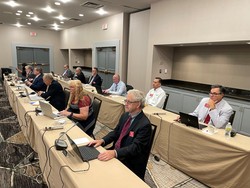
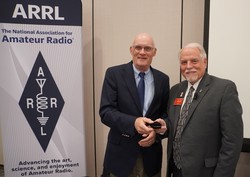
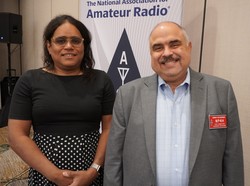
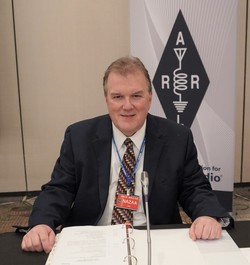
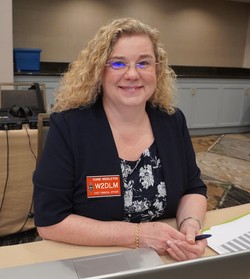
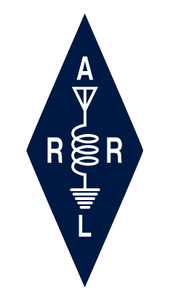 The Board also recognized the following ARRL Affiliated Clubs for their lengthy tenure and service to the amateur radio community:
The Board also recognized the following ARRL Affiliated Clubs for their lengthy tenure and service to the amateur radio community: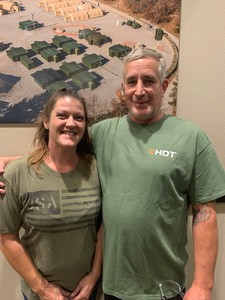
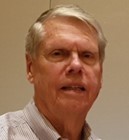
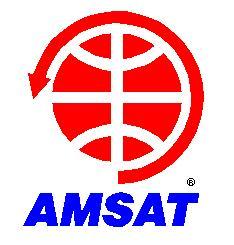 Website (AROW), anyone with internet access can pinpoint where Orion is and track its distance from the Earth, its distance from the moon, the mission duration, and more. AROW is available on
Website (AROW), anyone with internet access can pinpoint where Orion is and track its distance from the Earth, its distance from the moon, the mission duration, and more. AROW is available on .jpg)
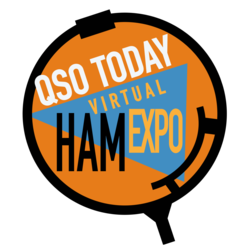 The 5th QSO Today Virtual Ham Expo is returning September 17 - 18, 2022. The fully-interactive and full-featured virtual ham radio convention will provide great interactive presentations, new content, and excellent networking opportunities including 50+ amateur radio presentations on a wide variety of subjects. Check out the full list of
The 5th QSO Today Virtual Ham Expo is returning September 17 - 18, 2022. The fully-interactive and full-featured virtual ham radio convention will provide great interactive presentations, new content, and excellent networking opportunities including 50+ amateur radio presentations on a wide variety of subjects. Check out the full list of  A crossband activation of NEPM, the Battleship USS Iowa's original active call sign, is scheduled in memory of Pearl Harbor. As the representative of the National Museum of the Surface Navy at the Battleship Iowa Museum in San Pedro, California, the Battleship Iowa Amateur Radio Association (BIARA) will honor the sailors and ships previously homeported in San Pedro who were attacked on December 7, 1941, with special crossband activations of NEPM on December 6 and 7, 2022. When Pearl Harbor was attacked, seven of the battleships formerly homeported in San Pedro Bay were not present. Eight Pacific fleet battleships -- the USS Arizona, USS California, USS Maryland, USS Nevada, USS Oklahoma, USS Tennessee, USS West Virginia, and USS Pennsylvania -- were at Pearl Harbor and absorbed the brunt of the Japanese attack. Of these eight ships, three sank, one capsized, and four suffered varying degrees of damage. Under the authority of the Navy and Marine Corps Spectrum Office Southwest, they will transmit using the Iowa's NEPM call sign on assigned military frequencies and listen for calls from the amateur radio community in their adjacent bands. NEPM will transmit on 14.375 MHz, 18.170 MHz, and/or 21.460 MHz on J3E upper sideband and/or A1A CW. The operator will advise listeners as to where they are listening. Amateur participants are reminded not to transmit on the NEPM military frequencies. Operations on both days are expected to be from 1500 to 2400 UTC. QSL procedures can be found at
A crossband activation of NEPM, the Battleship USS Iowa's original active call sign, is scheduled in memory of Pearl Harbor. As the representative of the National Museum of the Surface Navy at the Battleship Iowa Museum in San Pedro, California, the Battleship Iowa Amateur Radio Association (BIARA) will honor the sailors and ships previously homeported in San Pedro who were attacked on December 7, 1941, with special crossband activations of NEPM on December 6 and 7, 2022. When Pearl Harbor was attacked, seven of the battleships formerly homeported in San Pedro Bay were not present. Eight Pacific fleet battleships -- the USS Arizona, USS California, USS Maryland, USS Nevada, USS Oklahoma, USS Tennessee, USS West Virginia, and USS Pennsylvania -- were at Pearl Harbor and absorbed the brunt of the Japanese attack. Of these eight ships, three sank, one capsized, and four suffered varying degrees of damage. Under the authority of the Navy and Marine Corps Spectrum Office Southwest, they will transmit using the Iowa's NEPM call sign on assigned military frequencies and listen for calls from the amateur radio community in their adjacent bands. NEPM will transmit on 14.375 MHz, 18.170 MHz, and/or 21.460 MHz on J3E upper sideband and/or A1A CW. The operator will advise listeners as to where they are listening. Amateur participants are reminded not to transmit on the NEPM military frequencies. Operations on both days are expected to be from 1500 to 2400 UTC. QSL procedures can be found at 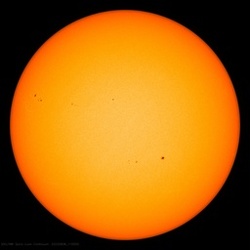
-Blue.jpg)








